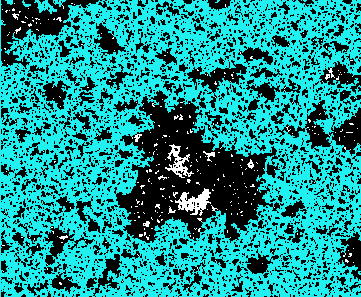Physics 525, Winter 2024
STATISTICAL MECHANICS 2

|
|
|
|
Marcel den Nijs
Office: PAB B429
Department of Physics
University of Washington
Seattle, WA 98195
(206)-543-7305
london@uw.edu
9:30 am - 10:50 am
Tu and Th, PAA A114
|
OUTLINE:
This is the second quarter of the graduate statistical mechanics course sequence.
The focus of this course will be on equilibrium and non-equilibrium critical phenomena, in particular, scale invariance, renormalization theory, topological phenomena with non-local order parameters, transfer matrices, and time permitting quantum phase transitions.
The purpose of this course is to provide graduate students essential background and core materials
that build directly on research from the 2nd half of the last century.
Current applications and extensions are found in, e.g., two dimensional quantum materials, biophysics, quantum information, and non-equilibrium processes.
We start with an overview of scale invariance as it emerged around 1960 in experimental work on phase transitions.
Scale invariance is the consequence of divergent correlation lengths by strongly fluctuating degrees of freedom.
Scale invariance was first observed in experimental data and theoretical series expansions and then explained about 1965 by Kadanoff in terms of "block spin invariance",
followed in 1971 by the formulation of renormalization theory (RT) by Wilson and Fisher, while merging with similar ideas and phenomena in particle theory.
Scale invariance is linked to fractal type geometric structures, and RT's can be viewed in retrospect as recursive reformulations of partition functions and correlation functions
based on the definition of fractal dimensions, such that exact and approximative methods give the values of the scaling dimensions.
We will review RT from this geometric perspective.
Molecular field theory methods date back to van der Waals. They fail fundamentally in describing strongly fluctuating collective phenomena and scale invariant systems. These methods are still with today in, e.g.,
Landau theory, density functional theory, and effective field theory.
We will review the reasons for why they fail for strongly fluctuating phenomena.
Next we will discuss examples of topological phase transitions, starting with two dimensional equilibrium critical phenomena, vortices in He films,
crystalline surface roughening, and Kosterlitz-Thouless phase transitions. Followed by VBS type phase in quantum spin chains.
These phenomena lack local order parameters but display string like topological order instead.
One of the holy grails of current research is to find extensions to higher dimensions of the exact methods that allowed us earlier to determine
the exact scaling properties of all one dimensional quantum, and two dimensional classical equilibrium phase transitions. These methods
come under several equivalent or complementary names, including, Coulomb gas methods, conformal invariance, and Tomonaga- Luttinger liquid bosonization.
We will review briefly some aspects of these methods.
We will review transport theory and the Onsager reciprocal relations in the context of electrons in metals and the Boltzmann equation.
Driven stochastic processes lead to novel types of stationary states. Scale invariance in the KPZ process is one of the basic examples.
CANVAS
All course materials will be posted on Canvas.
These include the homework assignments, homework solutions,
the solutions to the weekly short quizzes, my lecture notes, literature, and other documents for this course.
Canvas includes discussion options to encourage communication among students.
The lectures will be blackboards based while projecting posted lecture notes.
Taking pictures of the blackboards as well as a volunteer
posting them in the Canvas discussion area is encouraged.
HOMEWORK, TESTS, EXAMS, and CREDIT:
Weekly Homework (HW) assignments are posted on Canvas and due on Wednesday as uploads into Canvas.
All work must be handwritten in your own handwriting, except for computer output like Mathematica.
Each HW assignment is worth 30 points. Your lowest HW score (or one missing one) will not count towards your grade.
HW solutions are posted on Canvas the next day (Thursday) before class.
Weekly short in class quizzes about the lecture materials of the previous week, are held on Tuesdays
during the first 10 minutes of class.
These quizzes are in-person, paper based, and closed book.
The Quiz solutions are discussed in class immediately after the test and then posted on Canvas
They will be graded in full detail and each is worth 10 points.
Your lowest quiz score (or one missing one) will not count towards your grade.
There will be no midterms and no final exam.
(The latter to give you more time to prepare for the EM and QM MRE's.)
OFFICE HOURS:
My office hours are on Monday morning at 3-4 pm in-person in my office (room B429) and/or on Zoom.
The TA will announce office hours separately on Canvas.
You are invited to come to my office or contact me at any time with more questions,
comments, and suggestions, or whatever; provided I am not preoccupied with something urgent.
ACCOMODATION POLICIES:
Students who require SPECIAL ACCOMMODATIONS or encounter special (un)expected circumstances during the quarter should contact me as early as possible, so we can address these in a timely fashion.
See also: Disability Resources for Students .
The RELIGIOUS ACCOMMODATIONS policies of the UW can be found at
https://registrar.washington.edu/staffandfaculty/religious-accommodations-policy.
home page of Marcel den Nijs,
Physics Department URL
|
